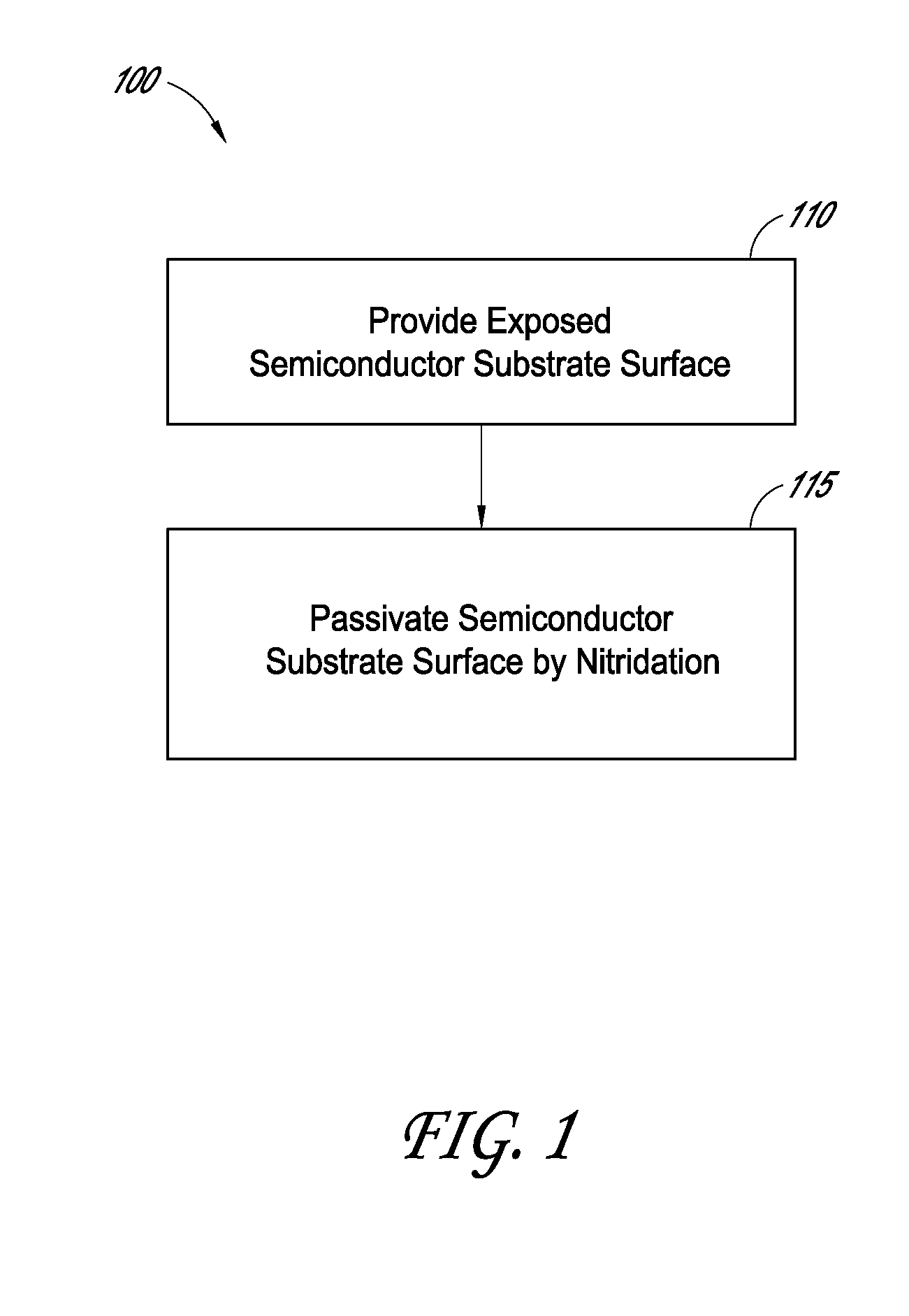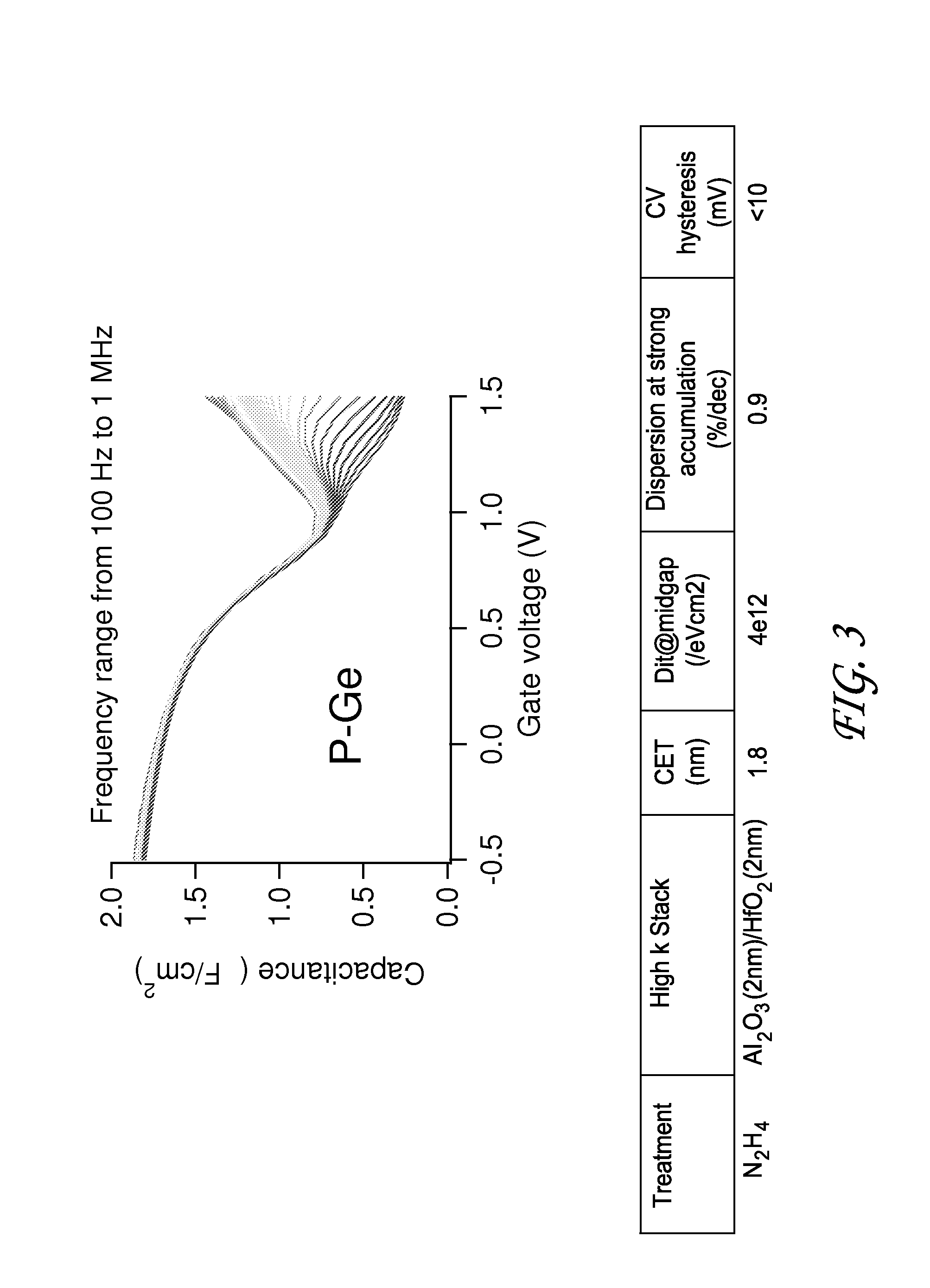Methods for semiconductor passivation by nitridation
a technology of nitridation and semiconductor, applied in the direction of semiconductor devices, semiconductor/solid-state device details, electrical devices, etc., to achieve the effect of high mobility
- Summary
- Abstract
- Description
- Claims
- Application Information
AI Technical Summary
Benefits of technology
Problems solved by technology
Method used
Image
Examples
example 1
[0045]Hydrazine passivation of germanium was investigated in a metal oxide semiconductor (MOS) capacitor, which has a structure similar to a MOS transistor, except that PN junctions (and source / drain regions) are absent. The germanium was part of a 1.5 μm germanium layer grown epitaxially on a silicon wafer and p-doped. The substrate was then pre-treated by being dipped in HF. The pre-treated p-doped germanium-containing substrate surface was then passivated by exposure to hydrazine in a Pulsar® ALD reactor available from ASM International N.V. of Almere, the Netherlands. The exposure duration was 1 minute, at a process temperature of 250° C. A 2 nm aluminum oxide layer and then a 2 nm hafnium oxide layer were deposited to form a dielectric stack over and contacting the hydrazine-treated surface. Platinum was deposited on the dielectric stack as a gate electrode, thereby forming the MOS capacitor. The platinum was deposited by evaporation, which included depositing platinum dots on ...
example 2
[0048]Passivation of p-doped and n-doped germanium using a germanium oxynitride layer was investigated in a MOS capacitor. As in Example 1, the germanium was part of a 1.5 μm germanium layer grown epitaxially on a silicon wafer and p-doped and n-doped. The substrate was then pre-treated by being dipped in HF. A germanium oxynitride layer was deposited on each of a p-doped and n-doped germanium substrate. The deposition was performed a Pulsar® ALD reactor available from ASM International N.V. of Almere, the Netherlands. The germanium oxynitride interlayer as deposited by ALD using tetrakis(dimethylamino)germanium (TDMAGe) as the germanium precursor, H2O as the oxygen precursor, and hydrazine (N2H4) as the nitrogen precursor. Each deposition cycle included the following sequence of pulses:
[0049]TDMAGe
[0050]H2O
[0051]TDMAGe
[0052]N2H4
[0053]Ten cycles were performed, with N2H4 exposure durations of a few second each time. The durations of the precursor pulses and intervening purges were,...
PUM
 Login to View More
Login to View More Abstract
Description
Claims
Application Information
 Login to View More
Login to View More - R&D
- Intellectual Property
- Life Sciences
- Materials
- Tech Scout
- Unparalleled Data Quality
- Higher Quality Content
- 60% Fewer Hallucinations
Browse by: Latest US Patents, China's latest patents, Technical Efficacy Thesaurus, Application Domain, Technology Topic, Popular Technical Reports.
© 2025 PatSnap. All rights reserved.Legal|Privacy policy|Modern Slavery Act Transparency Statement|Sitemap|About US| Contact US: help@patsnap.com



